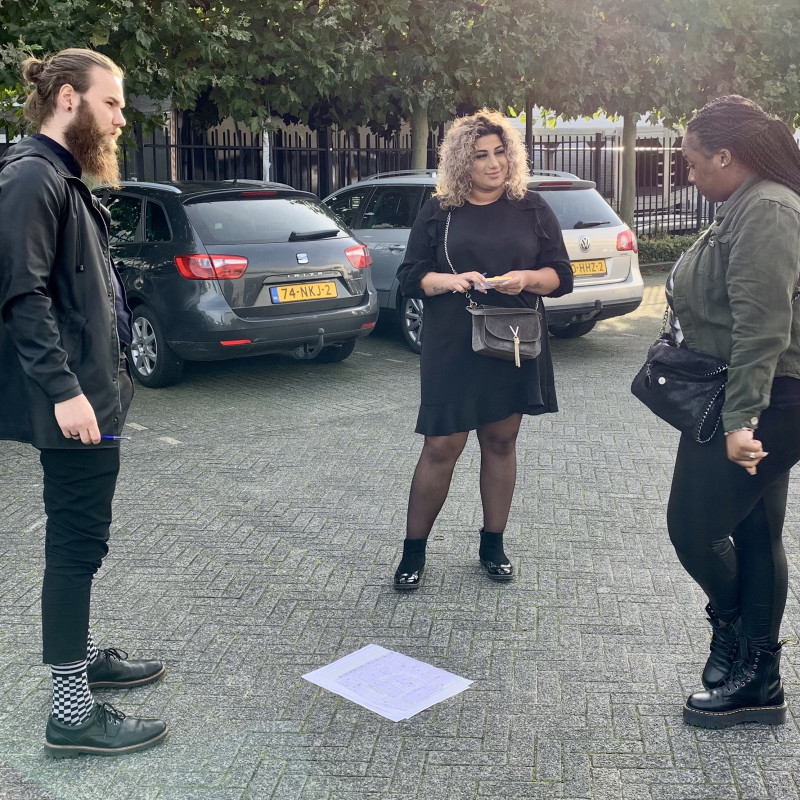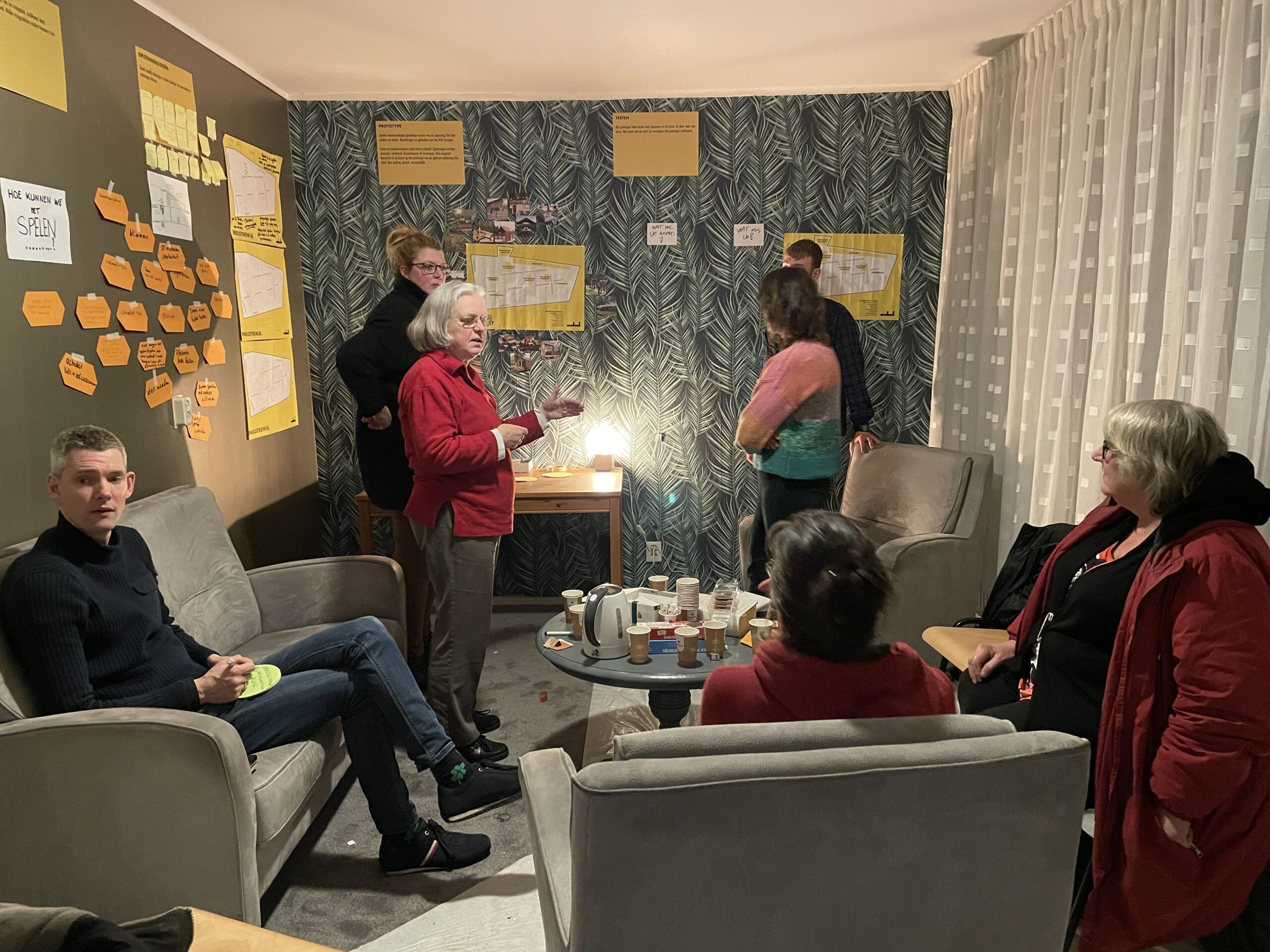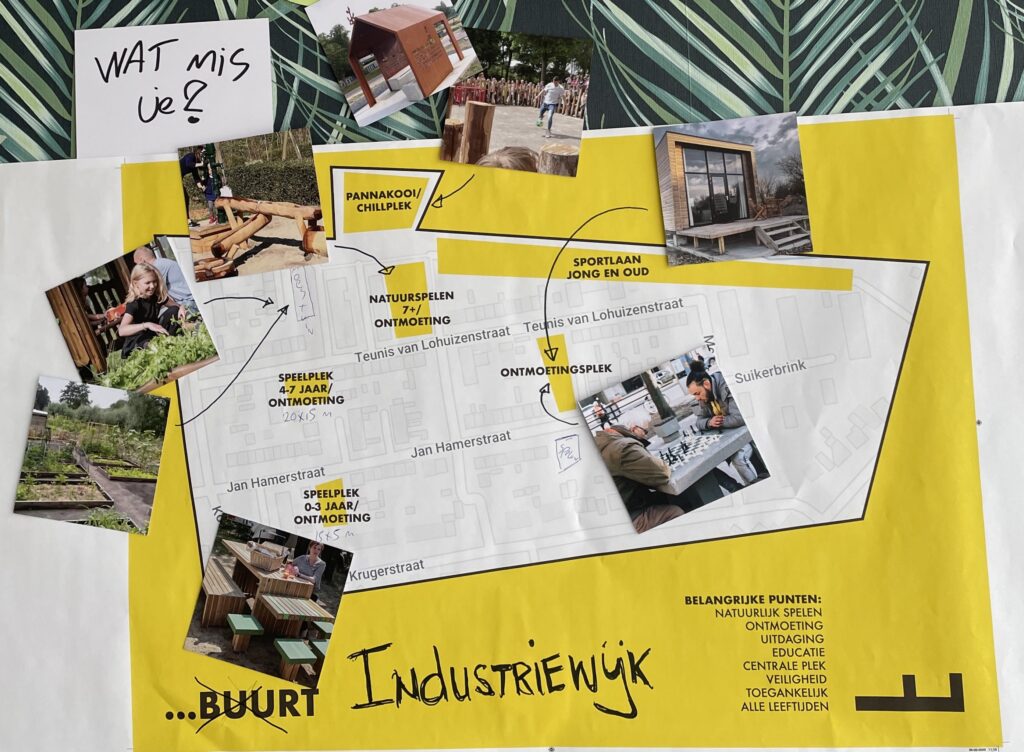
Buurtdesign, is a creative neighborhood approach with impact.
Buurtdesign is a approach by De Buurtontdekkers





Buurtdesign
Why?
BUURTDESIGN is a seven-step approach, with a strong focus on solving local issues in the neighborhood and district. The ambition? A better society for the Netherlands. Our country is struggling with a profound systemic crisis, which has undermined residents’ trust in politics and institutions. This has consequences for the democracy, as people feel they have little influence on their own living environment. We are convinced that the solution lies in the neighborhood, where residents and partners can bring about positive change together. Let us build together a living environment where everyone feels at home and enjoys living, amid the shifting focus from individual to collective in our society.
Buurtdesign, how?
To create change, we must learn to look, think and act in a different way. Dare to experiment and set a process in motion without predetermining the outcome. By striving for change, creativity and co-design, a new neighborhood society is created where everyone’s voice can be heard. The Neighborhood Design process is a blend of social design, design thinking, public design, maker power and other creative design processes. The seven steps are formulating an ambition, discovering issues, generating solutions and ideas, prototyping, testing in the neighborhood community and sustaining the change. Social system change requires the involvement and commitment of the community and strives to create a neighborhood with endless possibilities.
Neighborhood Design is a creative neighborhood approach with impact. It focuses on coaching residents and partners to design solutions to neighborhood issues. The approach aims to change (social) systems in the neighborhood community through collaboration, imagination and action.
Especially a lot of creativity, daring and fun!

“BUURTDESIGNERS DARE TO SWIM AGAINST THE CURRENT!”
~ Beard man.


The 7 steps of
BUURTDESIGN


The first step in Neighborhood Design is to formulate the ambition. The ambition is to create a neighborhood society where experimentation and action come together. As neighborhood designers, we understand that it is okay to make mistakes when trying new things. We want to collaborate on complex problems and create a culture of change. Together with residents and their partners. The ambition is to change society and build a future where everyone can be happy: ‘for more happiness in the neighborhood’!
The second step is discovery. Neighborhood designers curiously go into the neighborhood to discover the issues and understand what is not working well. We do this between the old and the new, in the “not knowing”. We believe that things can be done better and that everyone can design and contribute. By talking to people and understanding their feelings and values, we gain insight into what residents care about.
Followed by issues. Neighborhood designers try to see the neighborhood as it is and also how it could be. We examine the issue and look at what works and what doesn’t, how residents view and relate to it. Our focus is on residents’ personal experiences, seeking to understand what touches them and what amazes them. These valuable personal experiences are the key to successfully solving the issues. It brings out the heart of the issue. What does the issue look like and what do we need to solve together?
In the fourth step, as many solutions and ideas as possible are generated by residents. Of these, the best are chosen. This step is mainly about doing. Experimenting with small steps already. Neighborhood designers stimulate creativity and challenge conventional ways of thinking and systems. In doing so, we strive not only for concrete solutions, but also to create a new future perspective.
Creating a prototype is the fifth step in the Neighborhood Design process. The prototype acts as a bridge between ideas and real change. It helps improve the concept, discover problems and try out different approaches. A prototype makes the change tangible and understandable to others, allowing them to participate and provide feedback. It enables fellow residents to become co-makers of the design.
Testing the prototype in the neighborhood community is the next step. Testing the prototype locally can identify specific neighborhood-related challenges and gather valuable feedback from residents. This increases confidence and acceptance of the proposed change because residents are directly involved in the process. Testing, co-creating and collaborating with neighborhood residents in the neighborhood community ensures impactful and sustainable change. It is about testing what works in the everyday reality of the neighborhood.
Sustaining the change is the seventh and final step in Neighborhood Design. It is all about the ideas, vision and commitment of residents and their partners. It involves building a close-knit community, where residents come together, network and collaborate. Systemic change requires movement, new attitudes, behaviors and habits for an (increasingly) larger group of people. Residents feel ownership of the change and want to have a say. Establishing or strengthening a residents’ organization can help.
To sustain the neighborhood approach, there are three important questions: what do residents want in the future, what can they do themselves and what do they need support with? Building connection, trust and ownership is crucial. Social system change is an ongoing process carried by people.
Important questions to ask during the process:
- Are your solutions, besides your theme, also focused on social change in the neighborhood?
- What impact do your solutions create, aimed at pleasant living together in the neighborhood?
- Are your solutions developed primarily from the perspective of the residents. Did you develop the solutions with the residents?
- Are your solutions creative. Do the solutions break through existing systems and structures?
- Did the solutions come about by looking, thinking and acting differently at the issues?
- Are your solutions aimed at positively influencing residents behavior?
- Are your solutions focused on how to make complex issues simple?
- Are your solutions sustainable?
- In other words, do your solutions retain their value so that residents continue to benefit from them in the long term?
Lets connect and
buurtdesign together.
For more information and good coffee: contact de Buurtontdekkers.